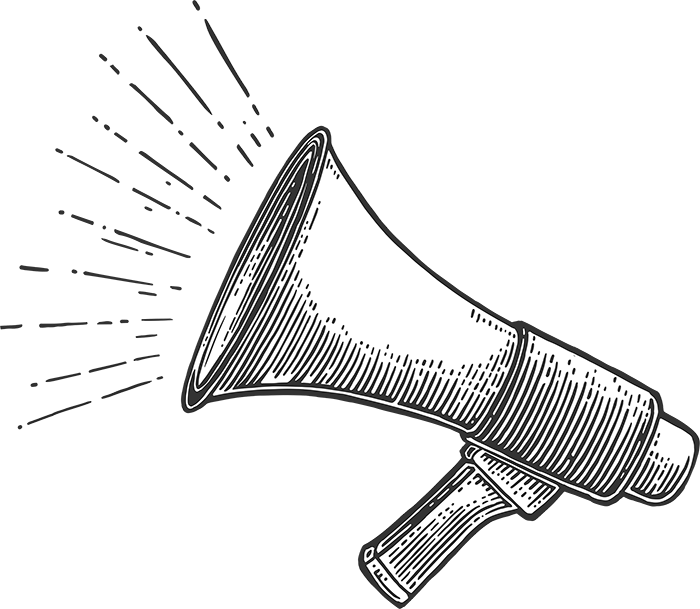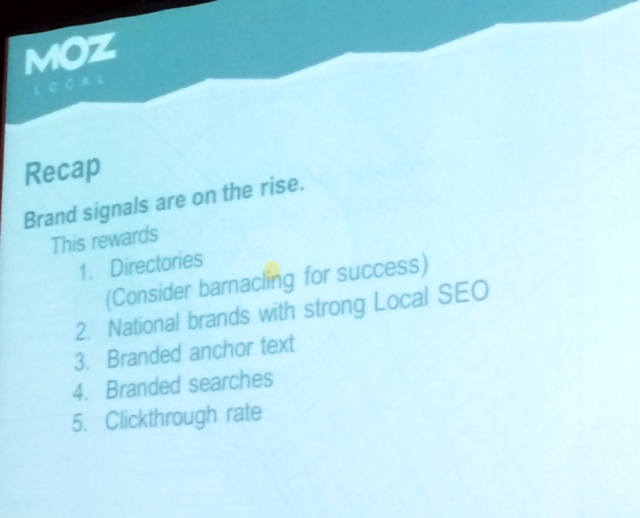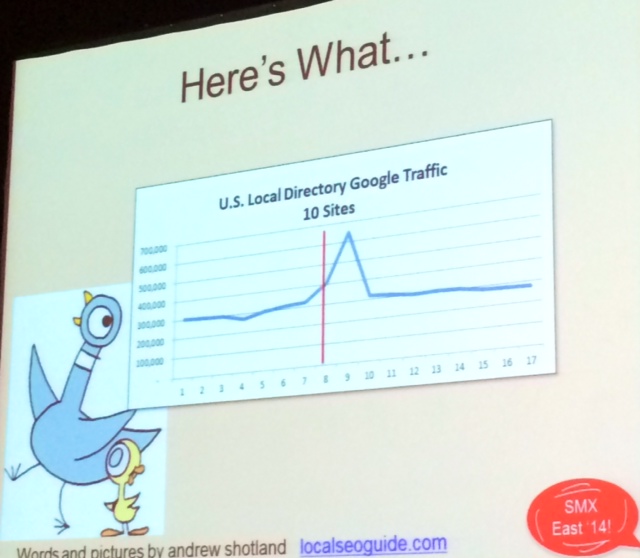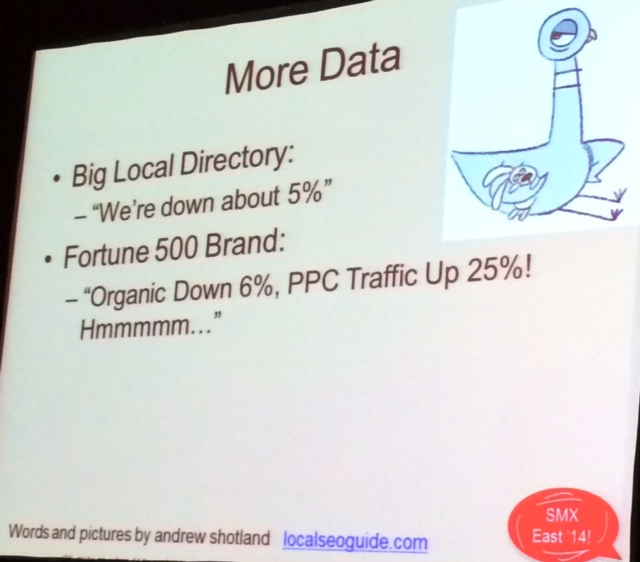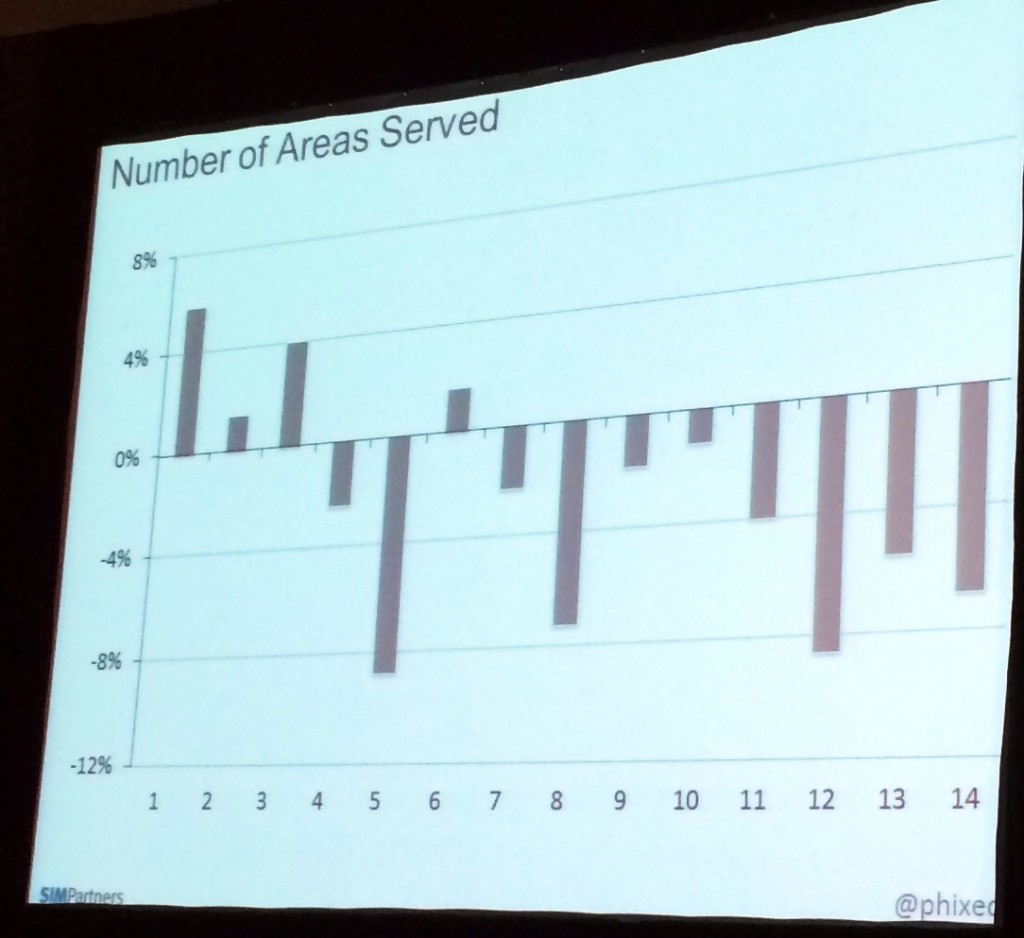SMX East Liveblog: Deconstructing Pigeon, Google’s New Local Search Algorithm
In July, the quality of Google local search results took a turn for the worse, experts say. The cause? A pesky little creature called the Pigeon Update crawled into the maps, local packs and authoritative one boxes. Learn what changed for searches with generic terms, geolocally modified terms, and see some of the wacky-broken results that have cropped up since Pigeon landed.
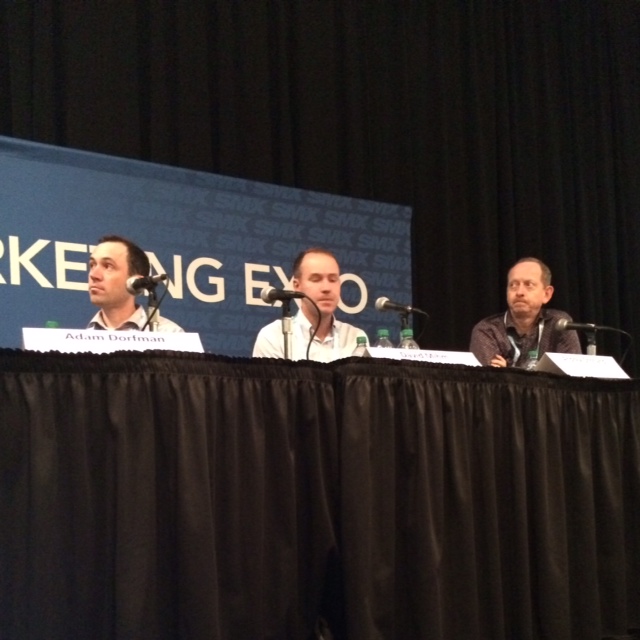
Moderator: Matt McGee, Editor In Chief, Search Engine Land & Marketing Land (@mattmcgee)
Speakers:
- Adam Dorfman, SVP – Product & Technology, SIM Partners (@phixed)
- David Mihm, Director of Local Search Strategy, Moz (@davidmihm)
- Andrew Shotland, President, Local SEO Guide (@localseoguide)
Pigeon Analysis by David Mihm: Back to the Future
David Mihm looks at 4 things about Pigeon for this presentation:
- What Google said
- What Mozcast says
- What the experts say
- Takeaways
1. What Google Told Search Engine Land about the Local Search Update
- Web ranking signals are going up
- Knowledge Graph behavior going up
- Some change to distance location parameters
Let’s look at how these 3 things hold up to the results of his analysis of search results according to Moz data.
- The query “day spa san francisco” shows a very similar set of results in local Google Maps and web rankings. This looks like supporting evidence for what Google said.
- Knowledge Graph: it’s clear there was an update. There are now some strange results like an answer box for a query where it doesn’t really make sense (e.g., “DWI attorney new Orleans” is not a query that should get an answer box). Google is definitely ratcheting up the KG signals, but it isn’t getting it right yet.
- Andrew Shotland’s article “Is your local business ready for Google’s neighborhood algorithm?” shows good evidence of the truth of No. 3. Searching for “convenience store,” a general term, gives you a tight radius of results to your location. By adding a geomodifier, results open to a larger radius. This is true for carousel results as well.
2. What Mozcast Shows
Dr. Pete is the Moz mad scientist. He pulled some data that showed a 23% drop in total results showing local packs.
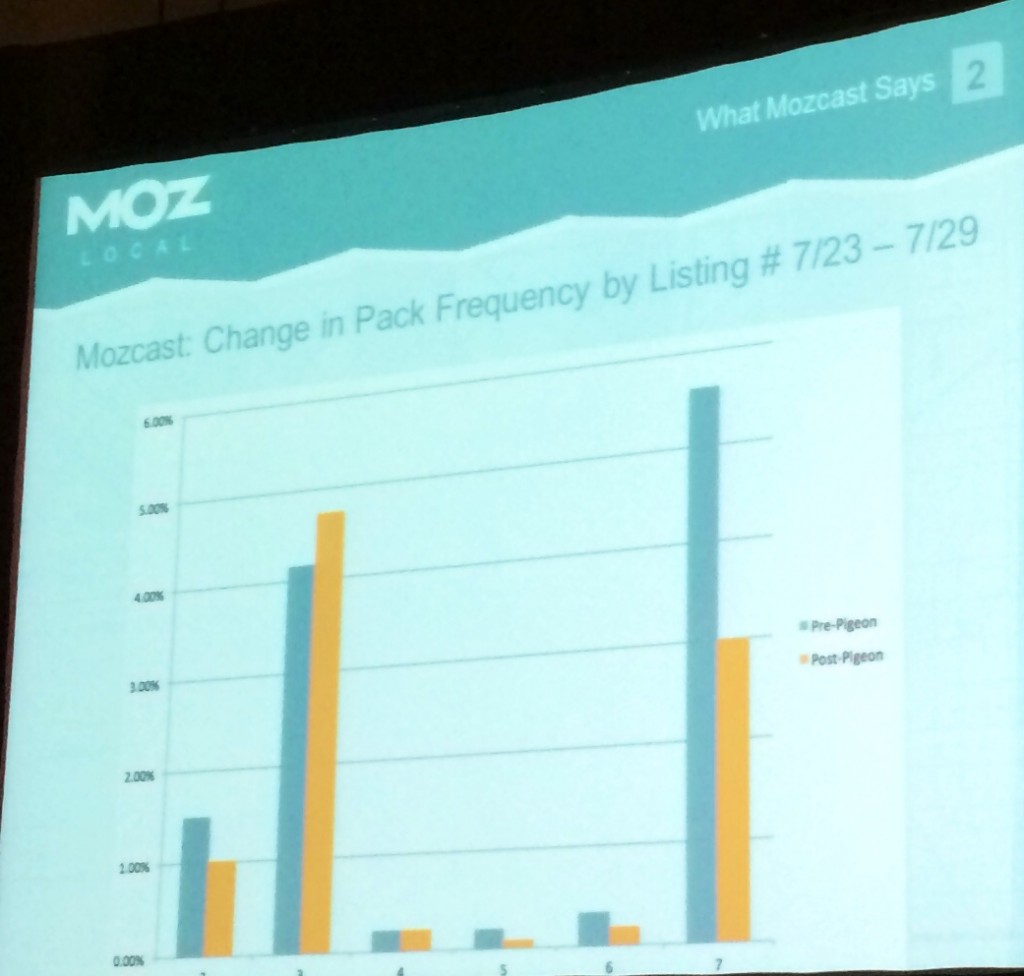
There was a fairly even breakdown of gains and losses. Losses were often on real-estate related terms while branded terms saw gains in packs and one boxes.
Takeaway: If you’re a brand with physical locations in a given market, if you can make your physical locations clear to Google you’re likely to get authoritative one box or in the packs.
Here’s an example of a generic term that gained local authoritative one boxes: “boats for sale” search in Connecticut gives an authoritative one box to Jack Regan’s Yacht Shop. The best guess as to why is Google is using a signal from Acxiom, a known data aggregator Google uses for local data.
3. What the Experts Say
Every year David Mihm surveys the local search industry experts about local search ranking factors (LSRF) that are gaining and losing importance. Here are the generally agreed upon winners and losers this year.
2014 LSRF Big Winners:
- Domain authority
- Proximity to searcher
- Quality of inbound links
2014 LSRF Big Losers:
- Proximity to centroid
- Physical address in city of search
- Verified GMB pages
- Quantity of structured citations
- Proximity to other businesses in industry
He sees Pigeon as an amplification of Hummingbird — that is, a strong brand preference. Web signals like links have never been good at identifying worthy local businesses. Directories’ internal links are more powerful than all but a handful of inbound links.
What about pack results? Spammers who know Google’s playbook are the ones winning.
To recap:
Pigeon Analysis by Andrew Shotland
Andrew Shotland does local SEO for both big sites and little local ones. In May, local pack results disappeared for a lot of real estate-related queries. That seemed freaky, and not good for his real estate clients. Over 30 days they pulled this data for 24 real estate clients.
Traffic of real estate clients:
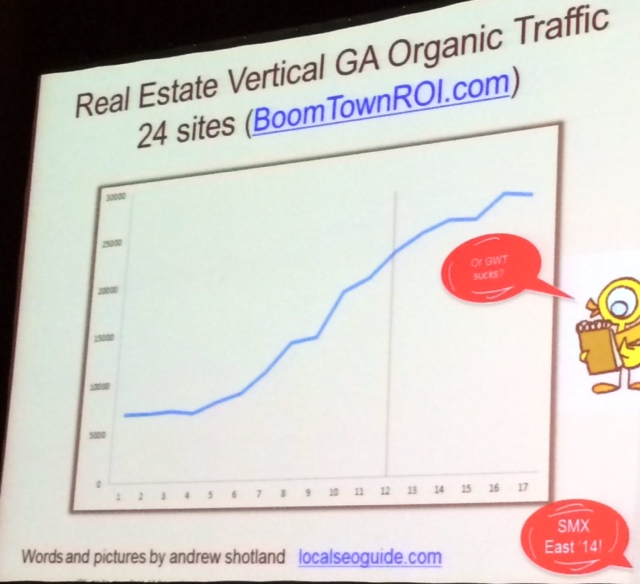
Impressions according to GWT:
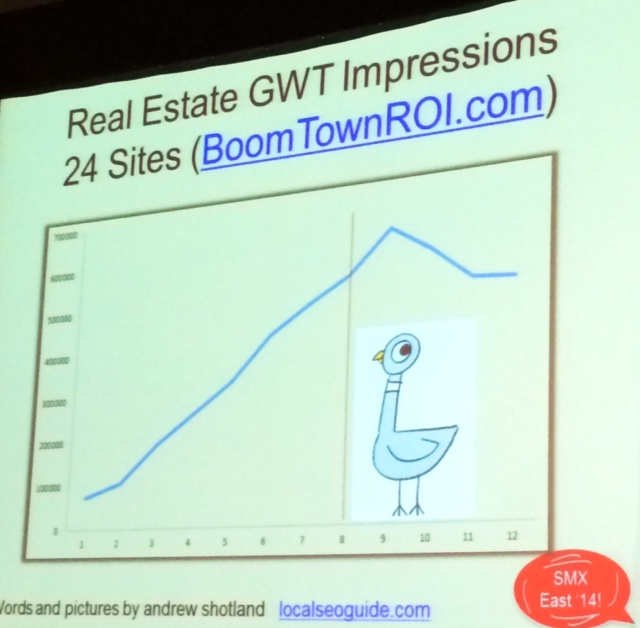
Clicks according to GWT:
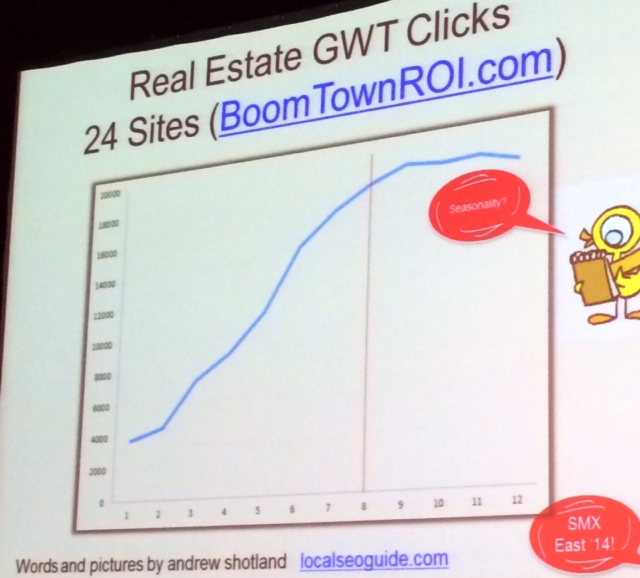
They saw the same pattern for roofing clients and moving company clients.
The analysis:
- Traffic was going up even though local pack results had disappeared.
- Pigeon was awesome for sites that lost head terms and were getting long-tail traffic.
- Seemed to be seasonality at play.
- Impressions jacked up after Pigeon.
- Traffic started to drop as impressions started to drop.
- Their conclusion from the data is that nothing really changed in terms of performance for roofing and moving company clients.
What about directories?
If you lose pack results, directories will naturally rise up; that probably happened for stronger directories like Yelp and Trip Advisor, but it turned out that for most smaller directories, the rankings hadn’t gone up, and some lost traffic post-Pigeon.
For most directories they work with and those they’ve talked to, Pigeon was +/- 5%.
And a notable difference after Pigeon is that there’s plenty of spam! He himself made some fake listings to test with fake addresses and exact match domains set up with a Yext power listing; those fake results got up in pack rankings in about 3 days.
Key Learning: Don’t Let the Pigeon Drive You Crazy
There are cases where Google’s backend data set is broken, and the only fix is to wait for Google to figure out what’s broken and fix it.
Pigeon Analysis by Adam Dorfman
Adam Dorfman’s presentation is available at: http://bit.do/pigeon.
For the following findings he analyzed:
- Sample size of 5000 location pages
- Data collection timeline: 2 weeks pre-Pigeon, Pigeon (7/24), 2 weeks post-Pigeon
He likes to take Matt Cutts and Google at their word to believe that any changes by Google are meant to improve quality of search results. So, he doesn’t worry as much about a change to quantity of traffic, but rather looks to see indications of improvement in quality of traffic; that is, if (on-page) conversion rate goes up.
Analysis of Pigeon traffic and conversion rate shifts:
- Traffic: -5.71%
- Conversion rate: -6%
Oops.
What difference makers to measure?
- Business detail
- Offsite factor
- Onsite factor
Business detail
They looked at an effect from a business’s distance from centroid, or center of city. In:
- Small markets there was a massive drop with distance of 20 miles or more from city center
- Suburban areas there was a narrowing of search results to near the city center
- Large markets there was a slight preference for locations just outside of urban city centers, dropping off outside of 20-mile radius
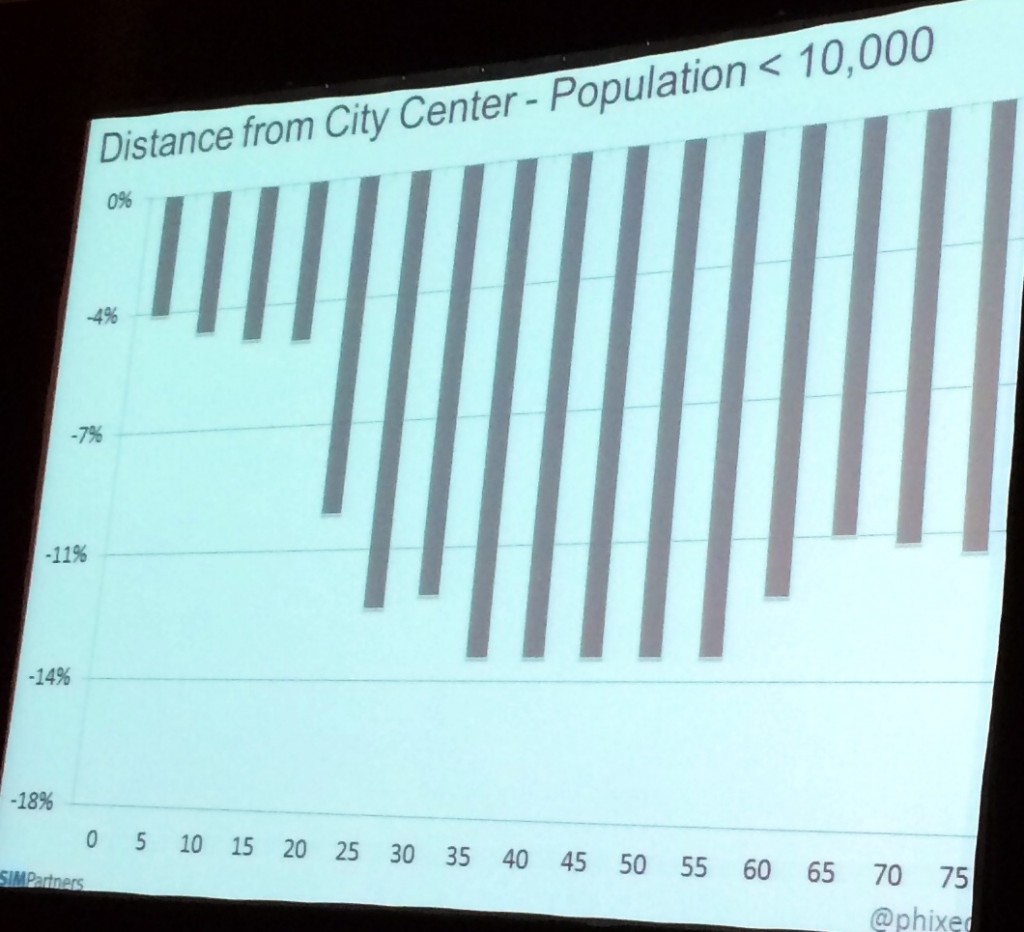
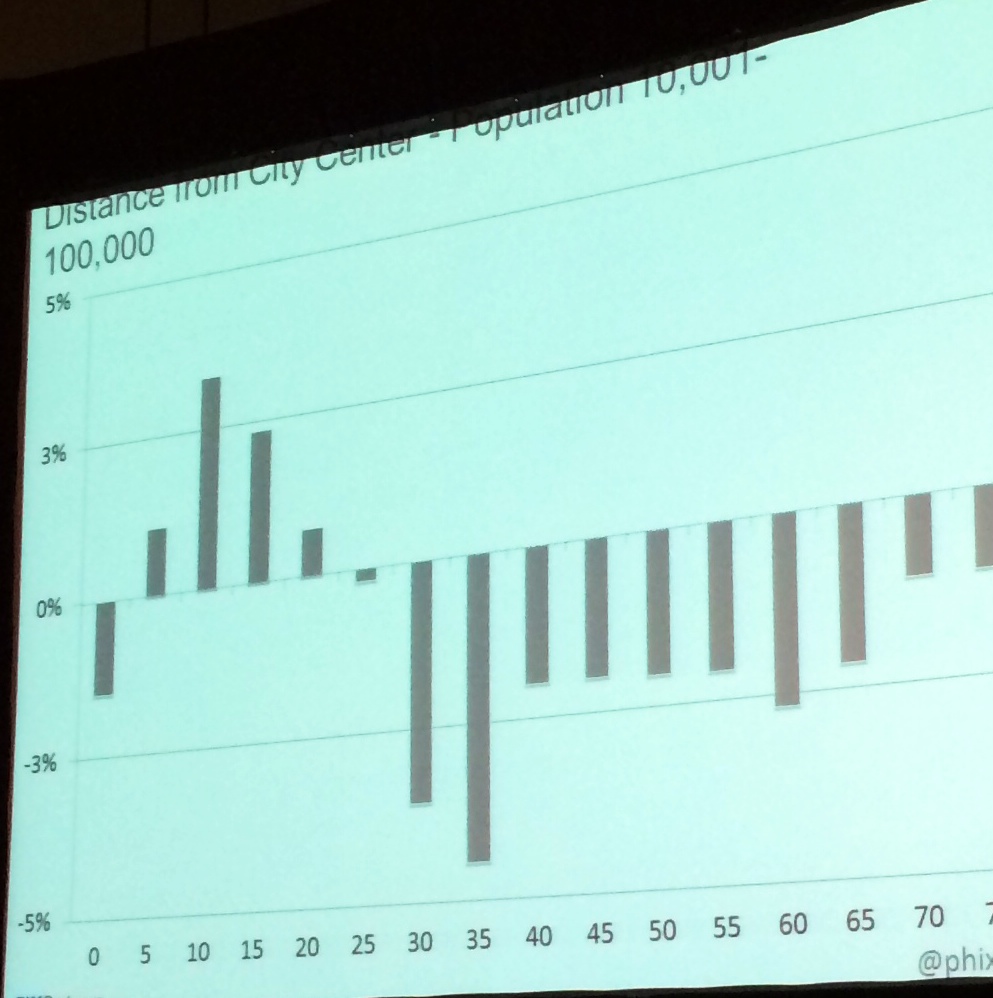
Offsite factors
If you’re a new business and you have no links, you really need a few links to get into the game. Page authority matters. External factors are increasing in importance.
Onsite factors
ZIP code served and area served are two things local clients often have on site. They that found having multiple ZIP codes, up to 3, helped conversions. Likewise, listing more areas served was a big boost to performance.
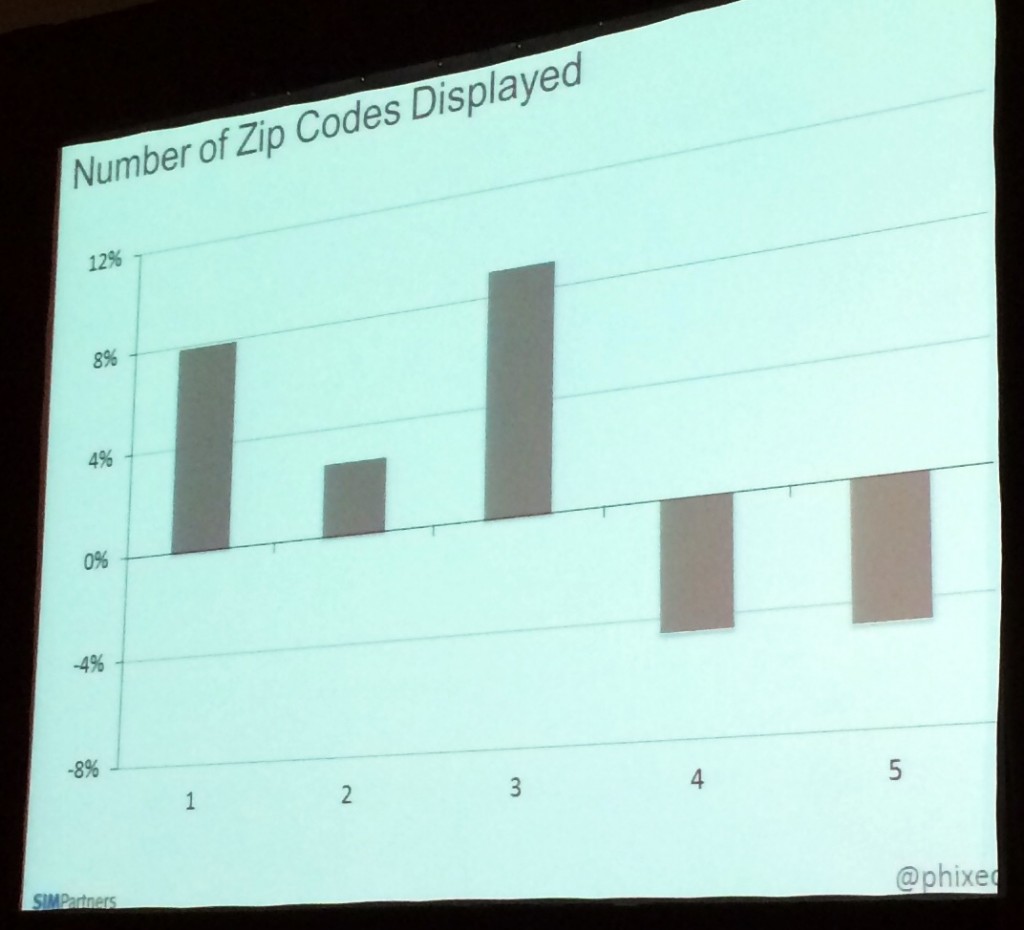
On-page optimization still matters. Over-optimization is being targeted. Keep experimenting.
Takeaways
- Pigeon Update doesn’t equal improved SERPs.
- Where your business is still matters.
- Attach your business to strong domains where possible. This is called “barnacling,” attaching yourself to strong domains.
- And don’t over-optimize your location pages.
- Experiment with what you’re doing on your website and location pages.

LEAVE A REPLY
